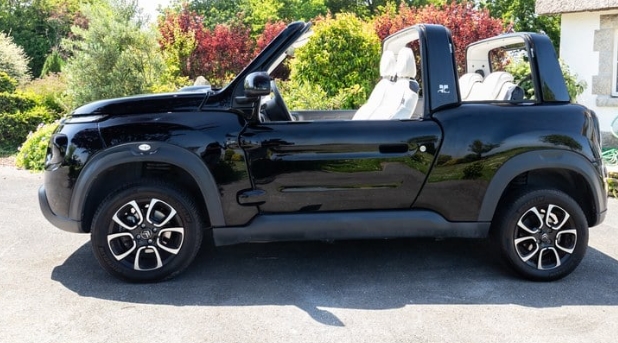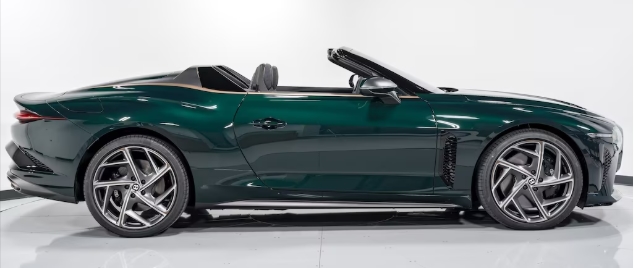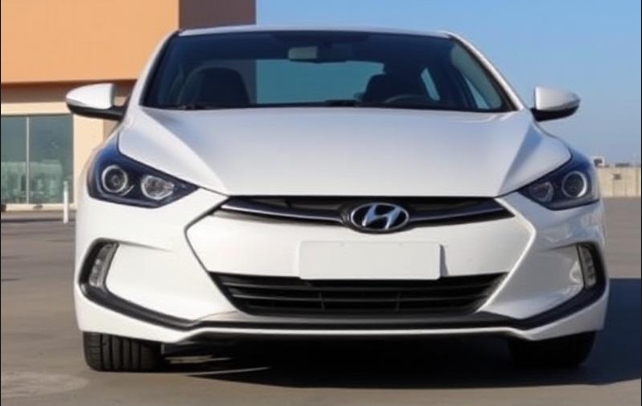A Modern Icon’s Electric Dream: The Evolution of the Citroën E-Méhari
In the vast and rapidly evolving landscape of electric vehicles, the Citroën E-Méhari stands as a joyful anomaly. It was never designed to be the most practical, the fastest, or the longest-ranging EV on the market. Instead, it was a car born from a feeling—an audacious attempt to recapture the carefree, bohemian spirit of its legendary 1968 namesake, the original Méhari, and translate it for a new, electric-powered century. Produced for just three years, from 2016 to 2019, its brief but colourful existence tells a fascinating story of heritage, technological partnership, and a brand’s commitment to being unapologetically different.
The Genesis: Reviving a Legend
To understand the E-Méhari, one must first look back to the original. Launched in May 1968, the Citroën Méhari was a masterpiece of minimalist utility. Based on the 2CV platform, its body was crafted from lightweight, dyed-in-the-mass ABS plastic, making it resistant to corrosion and minor impacts. With a foldable windscreen, removable doors, and a simple fabric roof, it was the ultimate leisure vehicle—a go-anywhere, do-anything car for the beach, the farm, or the sun-drenched coastal road.
Fast forward nearly five decades, and Citroën, under its new “Be Different, Feel Good” philosophy, sought to create a modern vehicle that embodied this same sense of freedom. The first hint came in September 2015 with the Citroën Cactus M Concept car. Based on the C4 Cactus, it was a rugged, open-air concept with large plastic doors, a hose-down interior, and a design that screamed summer adventure. It was a clear statement of intent, and just three months later, in December 2015, the production version was revealed: the Citroën E-Méhari.
Crucially, the E-Méhari was not a ground-up Citroën project. It was the result of a strategic partnership with the French Bolloré Group, a company specializing in electric battery technology. The E-Méhari was, in fact, a cleverly re-bodied and re-engineered version of the Bolloré Bluesummer, a convertible EV built for leisure. This partnership gave Citroën access to Bolloré’s unique Lithium-Metal-Polymer (LMP) battery technology, which would define both the E-Méhari’s character and its limitations.
The First Wave (2016 – 2017): The Pure and Unfiltered Experience
The first Citroën E-Méhari models began rolling off the production line at PSA’s Rennes plant and became available to the public in the spring of 2016. This initial version was the purest expression of the modern Méhari concept.
Model: Citroën E-Méhari (Standard Soft Top) Years Produced: 2016-2017
Technical Specifications: The heart of the E-Méhari was its electric powertrain and its distinctive LMP battery.
Motor: A permanent magnet synchronous electric motor producing a continuous power of 35 kW (48 hp) and a peak power of 50 kW (68 hp).
Battery: A 30 kWh Lithium-Metal-Polymer (LMP) battery pack. This technology was unique in the passenger car market. Unlike common Lithium-ion batteries, LMP packs operate at a high temperature (between 60-80°C) and are insensitive to external temperature changes, offering stable performance. However, this came with a significant caveat: to maintain its optimal temperature and charge, the battery required the car to be plugged in when not in use for extended periods, consuming a small amount of energy to keep itself warm.
Performance: Top speed was electronically limited to 110 km/h (68 mph). The focus was on relaxed, silent cruising rather than outright speed.
Range: It was officially rated for 200 km (124 miles) on the optimistic New European Driving Cycle (NEDC). In real-world conditions, a range of 120-140 km was more realistic.
Charging: Charging was slow by modern standards. A full charge from a 16A wall box took approximately 8 hours, while a standard 10A domestic socket required around 13 hours. There was no fast-charging capability.
Design and Trim: In its initial guise, there was essentially one trim level, with personalization coming from color choices. The design was a direct homage to the original.
Body: Like its ancestor, the body was made from thermoformed ABS plastic, with the color impregnated into the material itself, rendering it resistant to scratches and minor dings.
Colors: Four vibrant, playful body colours were offered: Grand Bleu (Blue), Orange Mécanique (Orange), Jaune Calvi (Yellow), and Beige de Jour (Beige). These could be paired with two roof colours (Black or Orange) and two interior upholstery options (Beige or an Orange-Red with a floral pattern).
Interior: The cabin was ruthlessly simple and built for durability. The seats were covered in a waterproof, plastic-coated fabric (TEP), and the floor had rubber mats with drainage plugs, allowing the entire interior to be hosed down. The dashboard was minimalist, featuring a simple digital display and basic controls.
Roof: The standard roof was a manual soft-top system with removable side panels featuring large plastic windows. Erecting or stowing it was a multi-step, physical process that recalled the hands-on nature of classic convertibles.
This first-generation E-Méhari was criticized for its spartan nature. It lacked power steering, air conditioning, and even a conventional glove box. The windows were flimsy, and the complex roof offered limited insulation from noise or weather. Yet, for its target audience—hotels, rental companies in tourist hotspots, and wealthy owners of holiday homes—this simplicity was part of its charm.
Limited Edition Style (2017): The Courrèges Collaboration
To elevate the E-Méhari’s status from a simple beach buggy to a fashion-forward design object, Citroën collaborated with the iconic French fashion house Courrèges. This resulted in a stunning, all-white limited edition.
Model: Citroën E-Méhari “Styled by Courrèges” Year Produced: 2017
Limited to just 61 units (a nod to the year Maison Courrèges was founded), this model was a study in minimalist chic. It was finished exclusively in a stark Vinyl White, covering the body, the interior upholstery, and even the dashboard. It featured a black hard top as standard, foreshadowing a future update. The look was completed with a bespoke, two-tone luggage set from Courrèges, making it the ultimate accessory for the stylish coastal elite. It was mechanically identical to the standard model but served as a powerful marketing tool, cementing the E-Méhari’s image as a “voiture de plage” with a high-fashion pedigree.
The Major Overhaul (2018 – 2019): A Dose of Practicality
After two years on the market, Citroën implemented a major update for the 2018 model year. Responding directly to customer and press feedback, the “New E-Méhari” was a significantly more refined and user-friendly vehicle, addressing many of the original’s shortcomings while retaining its core identity.
This update also introduced a formal trim structure for the first time.
Models and Trim Levels Offered:
E-Méhari Soft Top (2018-2019)
E-Méhari Hard Top (2018-2019)
Key Evolutions for 2018:
Performance Boost: While the battery and peak power remained the same, the motor’s torque was increased by nearly 20%, rising from 140 Nm to 166 Nm. This tangible improvement gave the car much livelier off-the-line acceleration and better responsiveness at low speeds, making it more enjoyable in city and town driving.
All-New Interior: The cabin received a complete redesign. The rudimentary dashboard was replaced by a more substantial, modern unit finished in the body color, with a sleeker look and improved ergonomics. The seats were redesigned to be more comfortable and supportive for longer journeys.
The Hard Top Option: The most significant change was the introduction of a permanent Hard Top model. This version came with a moulded black roof, proper front side windows, and rear quarter windows, effectively turning the E-Méhari into a small, quirky crossover. This massively improved its year-round usability, providing better security, weather protection, and sound insulation.
Added Standard Equipment: The 2018 models saw a wealth of features added as standard across both trims. This included the “Easy Entry” system for easier access to the rear seats, central locking, automatic headlights, and, crucially, safety features like ABS, ESP, and front and side airbags. A Parrot Bluetooth audio system also became standard, finally bringing modern connectivity to the cabin. Perhaps the most welcome addition for drivers was the introduction of electric power steering, transforming the low-speed manoeuvrability of the car.
With these changes, the E-Méhari evolved from a punishingly basic toy into a more viable, albeit still niche, electric car. The Hard Top version, in particular, broadened its appeal, making it a plausible choice for daily errands, not just a trip to the beach.
The End of the Electric Dream (2019)
Despite the significant improvements of the 2018 refresh, the Citroën E-Méhari’s journey was destined to be short. In early 2019, Citroën officially announced the end of its production. The reasons were multifaceted.
Sales were never high; in its entire production run, only around 1,500 to 2,000 units were sold. Its high price point, combined with its niche appeal, meant it was always going to be a low-volume halo car rather than a bestseller.
Furthermore, its technological foundation—the Bolloré LMP battery—was becoming its Achilles’ heel. The need to keep it constantly plugged in was inconvenient for private owners, and its slow charging speed was being rapidly outpaced by the new generation of EVs from competitors, which offered faster charging and longer ranges. The EV world had moved on, and the E-Méhari, with its quirky battery tech, felt like a relic from a different era of electrification.
.
MANY auto lovers not only spend time in their garages to tinker on their autos, but have other projects going on in there as well. Wood working is a popular pastime for the creative type of individual. Not sure what to make next? Or thinking about getting into this kind of hobby? There’s lots of possibilities… Here’s some of them…

.
Legacy: A Future Cult Classic?
The Citroën E-Méhari was a commercial footnote but a design and philosophical success. It was a bold, brave, and wonderfully optimistic car that perfectly encapsulated Citroën’s flair for the unconventional. It failed as a mass-market product but succeeded completely in its mission to be a cheerful, smile-inducing vehicle that celebrated freedom and fun over statistics and practicality.
Today, its rarity, unique backstory, and vibrant design mark it as a guaranteed future classic. It remains a rolling testament to a time when a major automaker dared to build a car not for the head, but purely for the heart—an electric dream of endless summer, even if it only lasted for a few short years.







